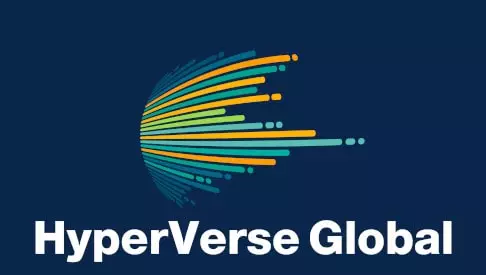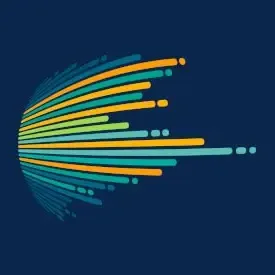The data extraction stage in a data pipeline is the first step in the process of transferring data from one or more sources to a target system. It involves extracting data from the source system and preparing it for further processing. This may involve cleaning and transforming the data to ensure that it is in a suitable format for the target system, as well as handling any errors or exceptions that may arise during the extraction process.
Effective data extraction is critical to the success of a data pipeline, as it determines the quality and reliability of the data that is ultimately used for analysis and decision-making. There are many different methods for extracting data, depending on the type and location of the source system, as well as the format and structure of the data. Some common methods for extracting data include using APIs, file-based methods such as AWS Glue or AWS Data Pipeline, and database-based methods such as AWS Database Migration Service or AWS Lambda.
By carefully designing the data extraction stage of a data pipeline, organizations can ensure that they have accurate and reliable data to support their business operations and decision-making processes.
Data Extraction
There are several ways that data can be extracted in a data pipeline:
- Batch extraction: This method involves extracting data from a source system in bulk at regular intervals, such as hourly, daily, or weekly. The extracted data is then transformed and loaded into the target system.
- Real-time extraction: This method involves extracting data from a source system as soon as it becomes available, without waiting for a scheduled batch extraction. This allows for near-instantaneous availability of the data in the target system.
- API-based extraction: This method involves using application programming interfaces (APIs) to extract data from a source system. APIs allow different systems to communicate with each other and exchange data in a structured way.
- Web scraping: This method involves using a program to extract data from a website or other online sources. Web scraping can be used to extract data from websites that do not have APIs or do not make their data easily accessible.
- File-based extraction: This method involves extracting data from files, such as CSV or Excel spreadsheets, and loading it into a target system.
- Database extraction: This method involves extracting data from a database, such as a SQL or NoSQL database, and loading it into a target system.
Data volume and frequency play an important role in data delivery methods. If the size of the data is large and it only needs one-time delivery then it can be transferred using a large capacity storage media and transported to the data center. If a large volume and high-frequency data need regular delivery then a dedicated network can be used. Otherwise, a VPN connection can be used to deliver data.
Data Delivery
There are several ways data can be pushed from a source system to a data pipeline or pulled by a data pipeline from a source system:
- Database replication: Data can be replicated from a source database to a data pipeline using a database replication tool. This involves setting up a connection between the source database and the data pipeline and configuring the replication process to transfer data on a regular basis.
- Data export: Data can be exported by the source system and sent to the file storage or data lake, which can then be ingested by the data pipeline. This approach is commonly used when the data volume is large or the data needs to be transformed before being loaded into the target system.
- Data API: Data can be accessed through an API provided by the source system. The data pipeline can then make API calls to retrieve the data as needed. This approach is commonly used when the source system has an API that exposes data in a structured format that can be easily ingested by the data pipeline.
- Direct database connection: The data pipeline can directly connect to the source database and query the data as needed. This approach is commonly used when the data needs to be transformed or aggregated before being loaded into the data pipeline.
Therefore, there are various ways that data can be pushed from a source system to a data pipeline, depending on the specific requirements and constraints of the system.
Data Export
There are several ways data can be exported into the storage system or data lake. To export data from a source system to a data pipeline, some common options include:
- File export: The source system can generate a file containing the data, such as a CSV or JSON file. The file can then be transferred to the data pipeline, either by transferring the file directly or by storing it in a cloud storage service such as Amazon S3 or Google Cloud Storage.
- Data export API: The source system can provide an API that allows the data to be exported. The data pipeline can then make API calls to retrieve the data as needed.
- Database export: The source system can export data from its database by running a SQL query or using a database export tool. The data can then be transferred to the data pipeline, either by transferring the exported data directly or by storing it in a cloud storage service.
- Data streaming: Data can be streamed from a source system to a data pipeline using a data streaming platform such as Apache Kafka or Amazon Kinesis. In this approach, data is continuously ingested from the source system and processed by the data pipeline in real time.
- Data replication: The source system can replicate data to the data pipeline using a database replication tool. This involves setting up a connection between the source system and the data pipeline and configuring the replication process to transfer data on a regular basis.
Data API
There are several types of web service technologies that can be used by the data pipeline to retrieve data from source systems. Here are some key differences between these technologies:
- SOAP: SOAP is a messaging protocol that uses XML to encode messages and HTTP to transport them. It is based on a set of standards and rules for exchanging messages between systems. SOAP is a more rigid and formal protocol than REST, and it requires the use of a WSDL (Web Services Description Language) file to define the interface for the web service.
- REST: REST is an architectural style for building web services based on the HTTP protocol. RESTful web services use HTTP methods (such as GET, POST, PUT, and DELETE) to perform operations on resources, and they use HTTP status codes to indicate the outcome of these operations. RESTful web services are typically easier to develop and consume than SOAP-based web services, as they do not require the use of a WSDL file.
- GraphQL: GraphQL is a query language for APIs that allows clients to request only the data they need, and nothing more. It is designed to be more flexible
Apart from the common web service technologies, there are many other web service technologies in addition to SOAP, REST, and GraphQL. Some of the other commonly used web service technologies include:
- JSON-RPC: This is a lightweight remote procedure call (RPC) protocol that uses JSON to encode messages. It is similar to XML-RPC, but it is simpler and easier to use.
- XML-RPC: This is a remote procedure call (RPC) protocol that uses XML to encode messages. It is a simple and easy-to-use protocol for exchanging information between systems.
- gRPC: This is a high-performance, open-source universal RPC framework that uses HTTP/2 and Protocol Buffers to exchange messages between systems. It is designed to be efficient, fast, and scalable.
- CORBA: This is a standard for distributed object communication that allows systems written in different programming languages to communicate with each other. CORBA uses the Internet Inter-ORB Protocol (IIOP) to exchange messages between systems.
- WebHooks: This is a pattern for sending notifications between systems over HTTP. A WebHook sends a request to a specified URL when a specific event occurs, allowing the recipient system to take action in response.
- OData: This is a standardized protocol for creating and consuming RESTful APIs that allows clients to request data from a server using a simple, uniform interface. OData is used to expose data from a variety of sources, including databases, file systems, and cloud storage.
Some of the above Web service technologies can also be used by the source system to send data to the destination system.
Data Storage
Once data is pushed into or pulled by the data pipeline it needs to be stored in suitable storage.
There are several factors to consider when selecting a cloud storage solution for data, including the type, volume, speed, and frequency of use of the data. Here are some examples of suitable cloud storage solutions based on these factors:
- Type of data: If the data is structured and fits well into a table or spreadsheet, a relational database such as Amazon RDS or Google Cloud SQL may be a good fit. If the data is unstructured or has a complex structure, a non-relational database such as Amazon DynamoDB or Google Cloud Firestore may be more suitable.
- The volume of data: If the data volume is large, a cloud storage solution with high scalability and throughput may be needed. Options include Amazon S3, Google Cloud Storage, or Azure Blob Storage.
- Speed of data: If the data needs to be processed in real-time or near real-time, a data streaming platform such as Apache Kafka or Amazon Kinesis may be a good fit.
- Frequency of use: If the data will be accessed frequently, a cloud storage solution with low latency and high availability may be needed. Options include Amazon S3 and Google Cloud Storage. If the data will be accessed infrequently, a less expensive storage solution such as Amazon S3 Standard-Infrequent Access or Azure Cool Blob Storage may be more suitable.
Enterprise Data Lake Integration
In a data pipeline, the raw data extraction and deployment (EDL RAW) zone is a staging area where raw data is extracted from the source system and prepared for further processing. The EDL RAW zone is typically used to store data temporarily while it is being cleaned, transformed, and validated before being loaded into the target system.
The source data is extracted from the source system and loaded directly into the EDL RAW zone. This allows the data to be cleaned and transformed in the EDL RAW zone before being loaded into the target system.
You can have data without information, but you cannot have information without data
Daniel Keys Moran
The data extraction stage in a data pipeline is the process of extracting data from one or more sources and preparing it for further processing. There are many different ways to extract data, depending on the type and location of the source system, as well as the format and structure of the data. Some common methods for extracting data include using APIs, file-based methods such as AWS Glue or AWS Data Pipeline, and database-based methods such as AWS Database Migration Service or AWS Lambda.
It is important to carefully design the data extraction stage of a data pipeline to ensure that the data is extracted efficiently and accurately. This may involve cleaning and transforming the data to ensure that it is in a suitable format for further processing, as well as handling errors and exceptions that may arise during the extraction process. By effectively extracting and preparing data, organizations can ensure that they have the accurate and reliable data they need to make informed decisions and drive business outcomes.



Comments are closed